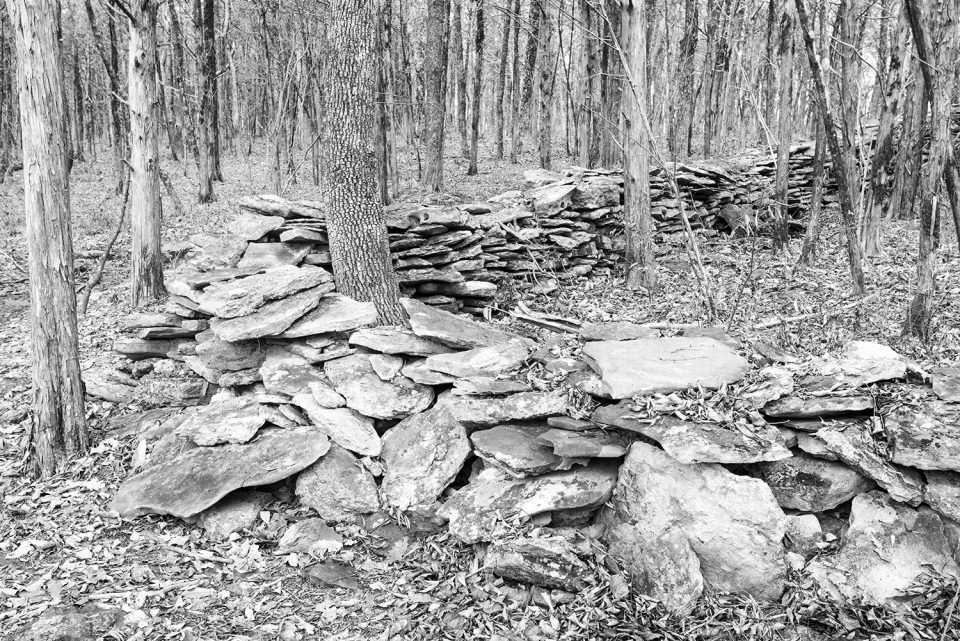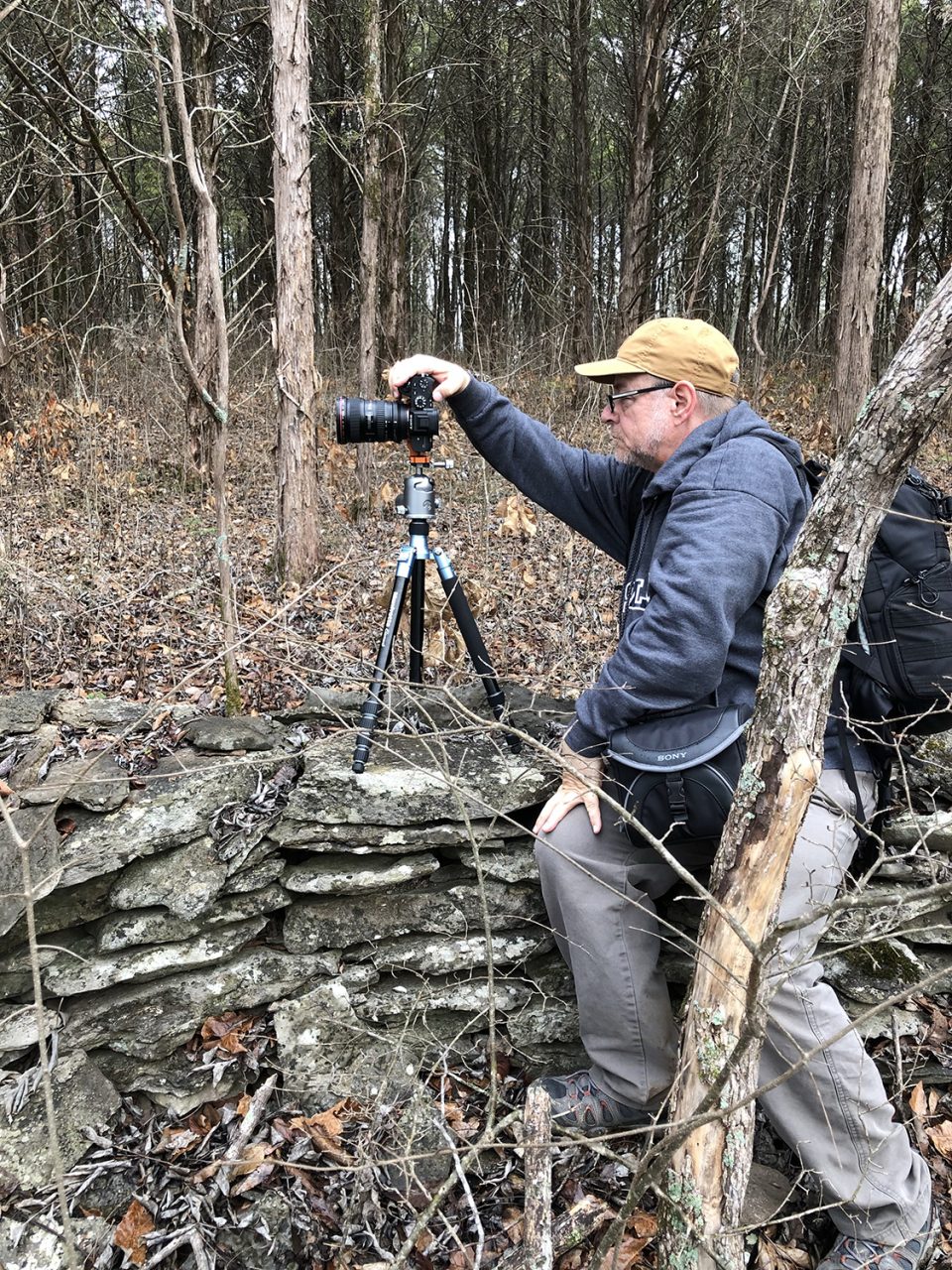Who built this old stone wall in the middle of the woods?
On a recent hike not far from my home, I came across an old stone wall in the woods. Stone walls are not uncommon in Tennessee but this one seemed to be in a strange location, on a hillside in the woods. I was curious about its origin, so I did some research.
The old stone walls of the South
Most of the writing about old stone walls seems to center on the old stone walls of New England, but the south has a wealth of old, dry-built stone walls, too. I found this one in the woods of Middle Tennessee, but I was puzzled by its placement.
Clearly it’s an old wall, with mature trees grown up along its edges. But why was it built here — and by whom? A quick Google search found an article from the history department of a local university that says the origin and purpose of this old wall is unknown. Stone walls were used as defensive structures during the Civil War, and the university article offers that as one possible purpose of this particular wall, since it’s positioned on a hillside overlooking a river. But the bottom line is that no one knows its history.
Stone walls in the south were often built by slave laborers who were trained by skilled stone masons who had immigrated from Scotland and Ireland, where there’s a long history of stone wall construction. Some of these old mortarless stone walls were built as long ago as the early 1800s. They served as boundary markers along property lines, as fences to keep animals in (or sometimes out), and to protect cemeteries. Farmers needed to clear rocks from their fields for plowing, so the walls served a dual purpose.


History of stone walls found in Middle Tennessee
This article features interesting history of the old stone walls found throughout the nearby city of Forest Hills, Tennessee. Whether this same history can be applied to the mysterious wall featured in the video is anyone’s guess.
And this VOA article, Dry Stack Walls: A Disappearing Piece of American History – 2002-03-05, further discusses the influence of Scotch-Irish stone masons and slave labor on the building of dry-built stone walls in Middle Tennessee. This article also highlights the fragile state of these old mortarless walls. They’re valuable historic structures that are easily destroyed.

Thanks for reading!
Be sure to visit me on Facebook, Instagram or Pinterest, or on my website at keithdotson.com.
~ Keith
Note: This blog post contains Amazon affiliate links. I may earn income from qualifying purchases.

I agree, looks like a boundary line or blockade, but I’d be looking for grave sights within it, or a cabin, some additional signs of people. Very cool! Thanks for sharing!
Hello from Britain,
Some thoughts about your wall from a retired waller.
I would describe it as a double sided freestanding flat topped wall. The building style is roughly coursed using what appears to be a sedimentary type of rock. The kinks in an otherwise straight wall are likely due to ground subsidence. Despite claims to the contrary, all walls settle over time and excessive settling allied with poor building technique leads to failure. A similar effect is seen when wildlife jump over walls and catch the topmost stones. A right angled corner is seen briefly In your video. In Britain, isolated walls like these were built as boundaries round an encroachment or temporary/seasonal animal pens.
To gain a better idea of your wall, you need to walk the entire length. Note the overall shape of the wall perimeter and if there are any built entrances. Small width is human, larger width is for animals. This wall may well be an unrecorded and one off enclosure – is there anything similar in the vicinity. If you have access to records, look for the history of ownership – someone may have written in a diary or family record about building the wall or using the enclosure. One clue may be if the land has a name. I know little about the civil war- I think the blockade suggestion is possible but unlikely unless the builders had sufficient manpower and time to collect the stone and then build the wall – also given the terrain it was liable to attack from behind and above.
Good luck with your search.
CH
Hey thanks so much for the detailed reply. That is really informative. The wall does have a 90-degree angle and it tapers off at both ends, just begins to slope until it ends. The idea of using it as a boundary makes sense to me, and perhaps a farmer needed to clear stones from the land but frankly this doesn’t seem like suitable farmland on this hillside. Not much deep soil. Regarding the possibility of an army building it, this area was a focal point of the conflict and they spent time here, even building large earth works — those are very large and sturdy earthen mounds that are still here. Your ideas for further research are valuable — thank you!